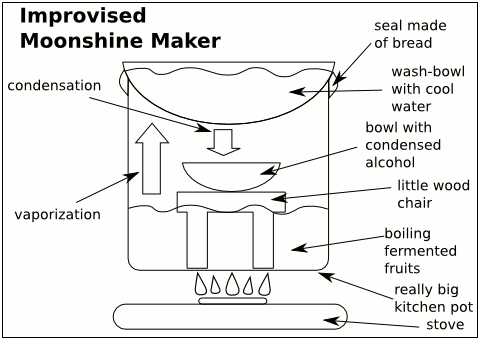A while ago for fun I went to a trade convention in Vancouver with my friend who was making a robotic aeroponic system for his thesis. The convention was on plant growing and hydroponics. So we went to go see if there were jobs available. People were selling things from lighting, piping, electrical equipment to fertilizers. Vancouver has a major problem with clandestine 'tomato' grow-operations (or grow-ops) and I was wondering whether this might have been at the show. It did not take too long before I found it.
Up to this point it seemed to be the regular Mom & Pop type of selling their products. My friend and I turned a corner and we saw a Hummer and scantily dressed girls as well as scorpions and tarantulas in cages. The company promoted growing 'tomatoes'!! They were actually one of the top companies that helped growers in British Columbia and could afford to pay for these things.
They gave us bags of plant surfactants. So I asked myself what are plant surfactants? I knew for any plant to grow it needs capillary action in order to suck the water from the soil to get to the root. Plants grown with
hydroponics (in a liquid environment with the nutrients around) absorb nutrients more effectively. A plant surfactant may help with this. There are two types of plant surfactants
that you can utilize for your gardening: organic surfactant and synthetic surfactant. If you use either an organic
plant surfactant formula or the highest quality synthetic surfactants, can help nutrients travel through water faster so your plants are able to easily source out what they need in order to have an enhanced growth and floral development.
Generally plant surfactants work by making it easier for cells to exchange nutrients and wastes. I am not a plant biologist but the scantily dressed women said 'this leads to a more advanced plant metabolism that maximizes the effect of artificial lighting, CO2, and high quality hydroponics nutrients so that 'tomato producers can produce stronger, more productive crops.' I believed them. So how does a plant surfactant work for the benefit of hydroponic growers? When you use a surfactant to unbind water’s hydrogen bonds, you make water more spreadable and lower the solid-liquid intermolecular forces between the plant and the liquid enabling hydroponics nutrients to become easily accessible for your plants’ consumption. A quick way to test for the correct surface tension of hydronics growing solution would be to use a quick
tensiometer device. The people at the show with the women in bikini were from a company called
Advanced Nutrients and use a plant surfactant called Wet Betty (shown above) to allow hydroponic growers to grow 'tomatoes' better. I did a quick google scholar search and I learned that plant surfactants can both help plants grow faster and achieve
nutrient exchange better by using less water. So give it up for plant surfactants.
Extra taken from
Wolfram Demo: To better understand capillary action and how surface tension affects capillary action you have to look at the math and components of it below. Liquids (water) wet glass and climb upward on the surface forming a concave meniscus. If the solid-liquid intermolecular forces are stronger than liquid forces this occurs. If you go to
Wolfram Demo and download the program you can get a really good demonstration of how surface tension affects capillary action. This whole post will then make a lot more sense since if you lower the surface tension it changes the solid-liquid intermolecular forces allowing water to be easily sucked by the plant.
Such liquids will rise in a narrow capillary tube until a balance is established between the effects of surface tension and gravity. The capillary rise increases sharply as the tube is made narrower. For example, water in a glass capillary of radius 0.1 mm will rise by about 140 mm. The capillary rise is given by

, where

is the solid-liquid surface tension in N/m,

is the contact angle for the meniscus (measured upward from the vertical wall),

is the density of the liquid,

is the gravitational acceleration (9.81 m/s

), and

is the radius of the capillary. In this Demonstration,

is expressed as a specific gravity (

corresponding to 1000 kg/m

), while

and

are given in mm. The default values are those for water in glass at 20°C.






















